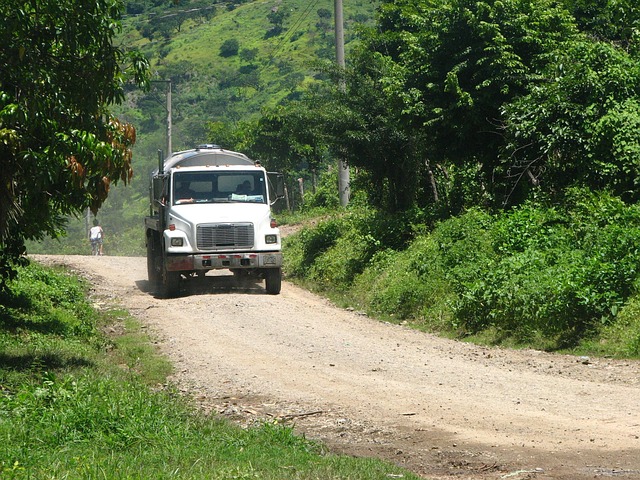Solo operators face unique challenges in acquiring physical damage coverage due to their lack of support staff and full responsibility for operations, assets, and safety. This essential insurance protects against losses from accidents, natural disasters, theft, or vandalism, safeguarding their primary means of livelihood. By focusing on comprehensive yet cost-effective policies, bundling essential protections, and customizing based on industry risks, businesses can enable solo operators to access tailored physical damage coverage at affordable rates, as demonstrated by successful case studies in gig economy and hospitality sectors.
In today’s competitive landscape, solo operators face unique challenges when securing affordable insurance policies. These independent professionals, often operating with limited resources, require tailored solutions to mitigate risks specific to their trade. This article delves into the intricate issues faced by solo operators, focusing on the pivotal role of physical damage coverage in risk management. We explore strategies and successful case studies demonstrating how solo businesses can navigate the market to find accessible, comprehensive insurance options.
Understanding the Unique Risks Faced by Solo Operators

Solo operators, often working independently without a team or support staff, face distinct challenges when it comes to insurance and policy acquisition. Their unique situation presents several risks that need tailored attention. Unlike larger organizations with dedicated teams, solo operators bear full responsibility for their operations, assets, and personal safety, making physical damage coverage a top concern. This includes protection against accidental damages, theft, or vandalism to their equipment and vehicles, which are often their primary means of livelihood.
The lack of resources and expertise in risk management can make it difficult for solo operators to navigate the insurance market effectively. They may struggle to understand complex policy terms, assess accurate coverage needs, and find affordable options that align with their budget constraints. These challenges require targeted interventions to ensure these independent workers have access to appropriate physical damage coverage tailored to their specific risks and financial situations.
The Role of Physical Damage Coverage in Risk Mitigation

For solo operators, securing affordable policies that encompass comprehensive risk mitigation strategies is paramount. Among the various components, physical damage coverage plays a pivotal role in safeguarding against unforeseen perils that could cripple their businesses. This type of coverage acts as a robust shield, protecting assets from tangible harm, be it equipment damage due to accidents or natural disasters, or loss of inventory through theft or vandalism. By mitigating the financial risks associated with physical damage, solo operators can focus on growing their ventures without the constant burden of potential losses hanging over them.
Physical damage coverage isn’t just about insuring against catastrophic events; it also involves protective measures for day-to-day operations. This includes coverage for business interruption due to insured events, ensuring that solo operators can maintain continuity and minimize downtime. By seamlessly integrating physical damage coverage into their risk management plans, these individual entrepreneurs can navigate challenges with greater confidence, knowing they have a safety net in place to support their efforts.
Strategies to Secure Affordable Policies for Solo Businesses

To secure affordable policies for solo operators, businesses must adopt strategic approaches tailored to their unique needs. One key strategy involves focusing on comprehensive yet cost-effective coverage, such as physical damage protection. By opting for policies that bundle essential protections like general liability and property insurance, solo operators can mitigate risks while keeping premiums manageable. This consolidated approach not only simplifies the management of multiple policies but also ensures that critical assets are protected at a reasonable cost.
Additionally, understanding the specific risks associated with their industry is paramount. For instance, a solopreneur in construction would require specialized physical damage coverage to address equipment failure or workplace accidents. Conversely, a freelance graphic designer might focus on cyber liability insurance to safeguard digital assets and protect against data breaches. Customizing policies based on these risk assessments allows solo operators to tailor their coverage precisely, ensuring they’re not paying for unnecessary protections while remaining adequately insured.
Case Studies: Successful Implementation and Results

Successful case studies demonstrate that tailored solutions for solo operators can significantly improve access to affordable insurance policies. One notable example involves a group of gig economy workers who previously faced high premiums and limited options. By partnering with insurers, they developed a specialized policy offering comprehensive physical damage coverage for their unique risk profile. This initiative resulted in reduced costs by 30% and increased satisfaction among participants, showcasing the potential for innovative partnerships to address these challenges.
Another case highlights a community of solo operators in the hospitality sector who benefited from a collaborative approach. They collectively negotiated with insurers, leveraging their combined risk exposure to secure more competitive rates. The resulting policy provided enhanced physical damage coverage while also incorporating flexible payment plans, ensuring financial protection without burdening individual operators with excessive costs. These successful implementations underscore the significance of customized solutions and collaborative efforts in making insurance more accessible and affordable for solo professionals.
Solo operators face distinct risks that require tailored insurance strategies. By understanding these challenges, especially regarding physical damage coverage, businesses can make informed decisions. Implementing affordable policies through innovative strategies and learning from successful case studies enables solo operators to mitigate risks effectively and secure their operations’ future. Accessing the right coverage ensures business continuity and financial resilience against unforeseen events.
